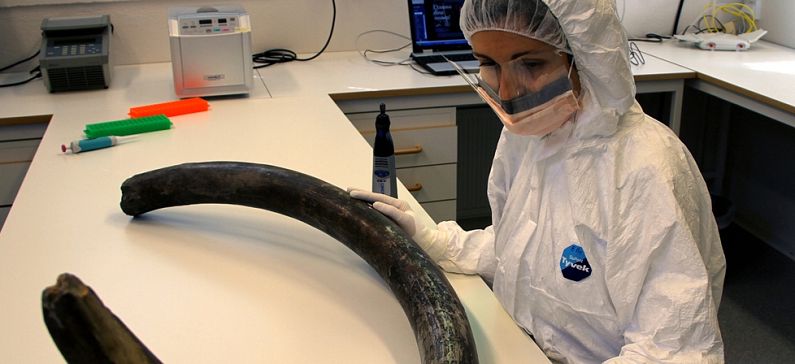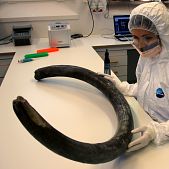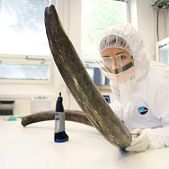
Greek researcher deciphered the complete DNA code of two mammoths
An international team, led by the Greek researcher Eleftheria Palkopoulou from the Swedish Museum of Natural History in Stockholm, deciphered complete mammoth DNA code.
Researchers deciphered the complete DNA code, or genomes, of two mammoths. The new genomes are far more refined than a previous one announced in 2008.
Eleftheria is a paleobiologist in the Department of Bioinformatics and Genetics of the Swedish Museum of Natural History and in the Zoology Department of Stockholm University.
The team reported their findings Thursday in the journal Current Biology. Eleftheria Palkopoulou said that recent successes in the tricky business of sequencing ancient DNA, including samples from early hominids like Neanderthals and Denisovans, inspired her team to try it out with woolly mammoths from Wrangel Island.
The animals are particularly interesting to paleobiologists because they were among the last surviving members of their species. Carbon dating has shown that mammoths on Wrangel Island managed to hang on until 4,000 years ago — 6,000 years after their relatives had vanished from mainland Siberia.
Palkopoulou and her colleagues wanted to see if the Wrangel Island mammoths, final members of a group on the brink of extinction, had diminished diversity in their DNA, a factor that might have contributed to their demise.
To figure that out, the team first had to find woolly mammoth bits well-preserved enough to sequence. Eventually they chose soft tissue from a juvenile male that lived in northeastern Siberia around 44,800 years ago and a molar from a Wrangel Island male mammoth that lived about 4,300 years ago.
Using the genome of a modern African savanna elephant as a reference point, the group then analyzed the mammoth DNA. Mammal genomes have two copies of every DNA molecule, one contributed from an animal’s mother and another from its father. By comparing the two DNA copies in each mammoth and noting when they were identical and when they weren’t, Palkopoulou and her colleagues were able to estimate how closely related the mammoths” parents would have been — an indication of the genetic diversity in the Wrangel Island and older Siberian populations. They were also able to estimate the two populations” sizes.
«From a single individual you can get information about the entire population,» Palkopoulou said.
Mammoths on Wrangel Island die out circa 2000 BCE, roughly the same time as the global flood event in the Epic of Gilgamesh and Genesis 6. Boom, my work is done here.
The Wrangel Island mammoth had long stretches of DNA with no variation between the mother’s and the father’s contributions, a sign that the animal’s parents were probably related and that the isolated population of mammoths was small. (The older Siberian mammoth’s DNA had more genetic variation.) The data also pointed to two major population declines in mammoth history: one that occurred 250,000 to 300,000 years ago and another that took place around 12,000 years ago, at the end of the last Ice Age.
The analysis could help scientists understand why species die out, and if genetic factors have to do with it, Palkopoulou said. Generally, scientists believe that lower genetic diversity lessens a population’s chances of survival.
Next, Palkopoulou said, the Stockholm-based group will look at more Wrangel Island mammoth DNA to understand patterns of inbreeding in the animals over time. Palkopoulou is also studying DNA from other members of the elephant family to understand how the species evolved over time.










